If you’ve been in China for a while, Taipei is an intriguing place, both Chinese and… not. I have been told that mainlanders often criticize the Taiwanese for not being “properly Chinese,” and more specifically for being – whisper it – too Japanese. Certainly, Taipei reminded me more, if not of Osaka, then perhaps of Busan, or at least Hong Kong. This is partly a matter of fashion; boutiques boast of having the latest designs from Japan and Korea. It is also, to be blunt, a question of manners. People are noticeably more thoughtful and aware of others, with less of the me-first-out-of-the-way jostling which is sadly so common in mainland cities.
There were mainlanders aplenty, and more than a little jostling, at the National Palace Museum, Taipei’s must-see visitor attraction. At the end of the Civil War, the fleeing Nationalists took with them nearly 4,000 crates of historical and cultural relics, so with no disrespect to Beijing’s National Museum, if you want to see the greatest of China’s treasures, you need to go to Taipei.
The hoard is so vast that only a fraction of it can be seen at any one time, with the Museum’s exhibitions regularly rotating. Even so, the breadth and richness of what’s on display is staggering.
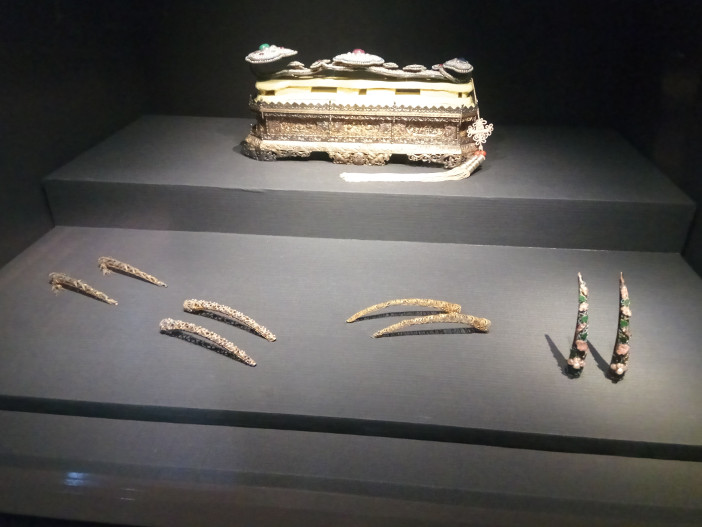
What every well-dressed Manchu needed: gold, gem-studded covers for your fingernails
Among the ceramics, there are not only exquisite porcelains from Jingdezhen and Longquan but 5,000-year-old stone age vessels, which incredibly are in better condition than much of the crockery we bought when we arrived in Beijing in 2015. Among the paintings, even the “fakes” are old and beautiful; when we visited, one room was dedicated to 18th-century copies of Ming and Tang old masters. Elsewhere, there are fabulous gold jewelry, intricately carved ivory miniatures, Tibetan bowls made as gifts for emperors… it’s enough to make your head spin.
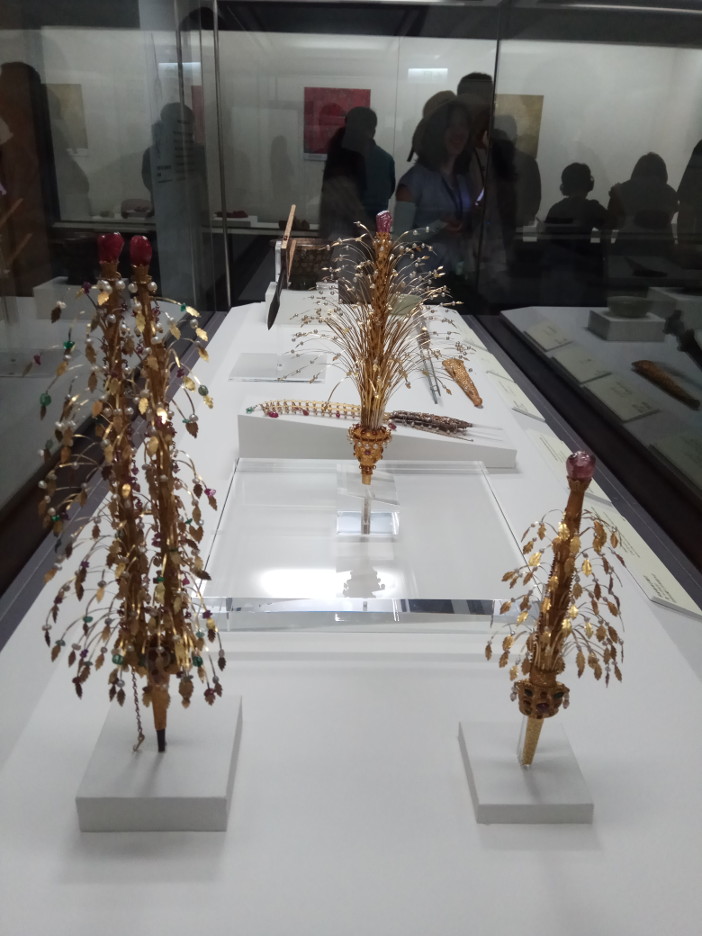
Breathtaking gold jewelry at the Palace Museum
The only display which jarred was a room dedicated to “new media” reinterpretations of the work of Giuseppe Castiglione, an Italian Jesuit painter at the court of three Qing Emperors. These were garish and tacky videos and projections, including a nun who looked more like a stripper than a saint. However, my kids loved a sub-Pixar animation in which the museum’s exhibits came to life to learn a lesson about the importance of friendship, or something (I wandered off in the middle.)
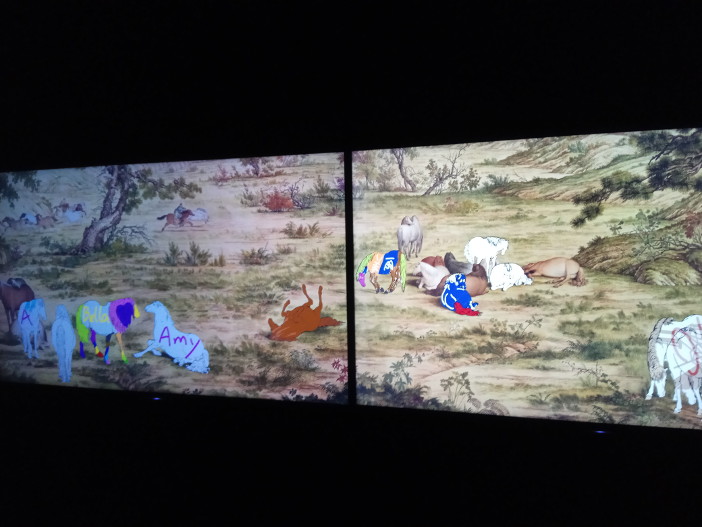
Because the best way to get kids to appreciate art is to let them scrawl all over it (digitally, of course)
I was more fascinated by bronzes from the age of Confucius, on which we can still read who had them made, when, and why. One treasure on permanent display is the Mao Gong Ding, a vessel from the Zhou era with a 491-character inscription, the longest of any known ancient bronze. Another is the famous Jade Cabbage, but it was so surrounded by sharp-elbowed selfie-snappers that we gave up trying to see it. In fact, after lunch, the tour parties arrived with a vengeance, and since we were tired and hungry and in no mood to be shoved around, we left without even seeing the jade galleries.
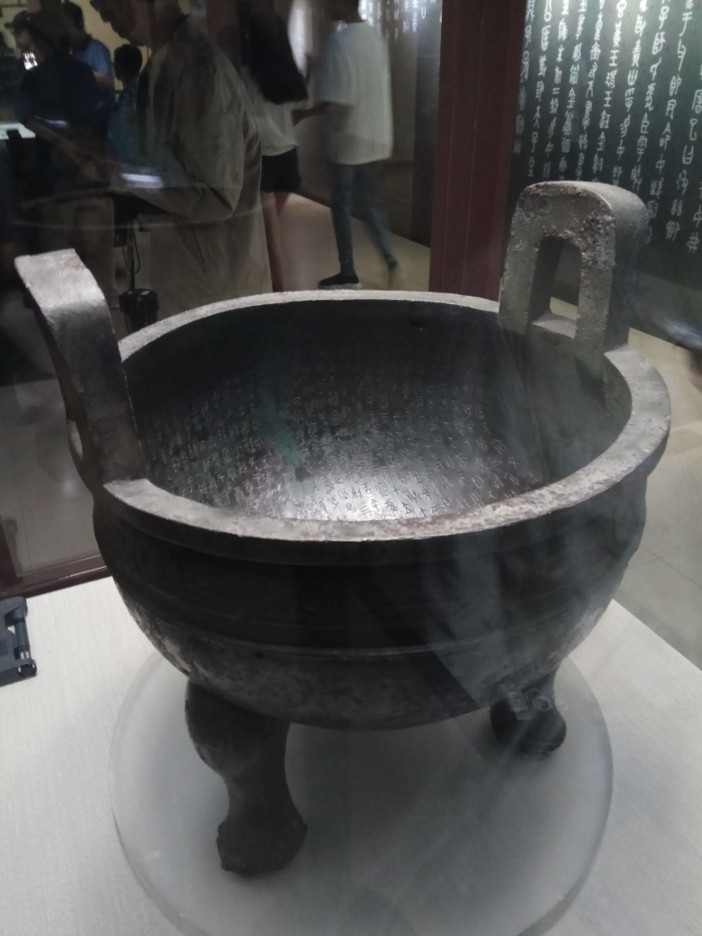
The Mao Gong Ding is on permanent display
The nearest Metro stop to the National Palace Museum is Shilin, but it’s still a fair distance from there, too far for kids to walk. We eventually tracked down the stop for the shuttle bus but got fed up of waiting and took a taxi. The Shilin Night Market, on the other hand, was directly below our accommodation, so that when we stepped through the door we were immediately assailed by crowds, the cries of vendors, and the smell of hot oil. It’s all good, gimcrack fun: carnival games, sizzling street food, and stalls full of brightly-colored objects with no discernible function which manage to be at the same time both cheap and overpriced.
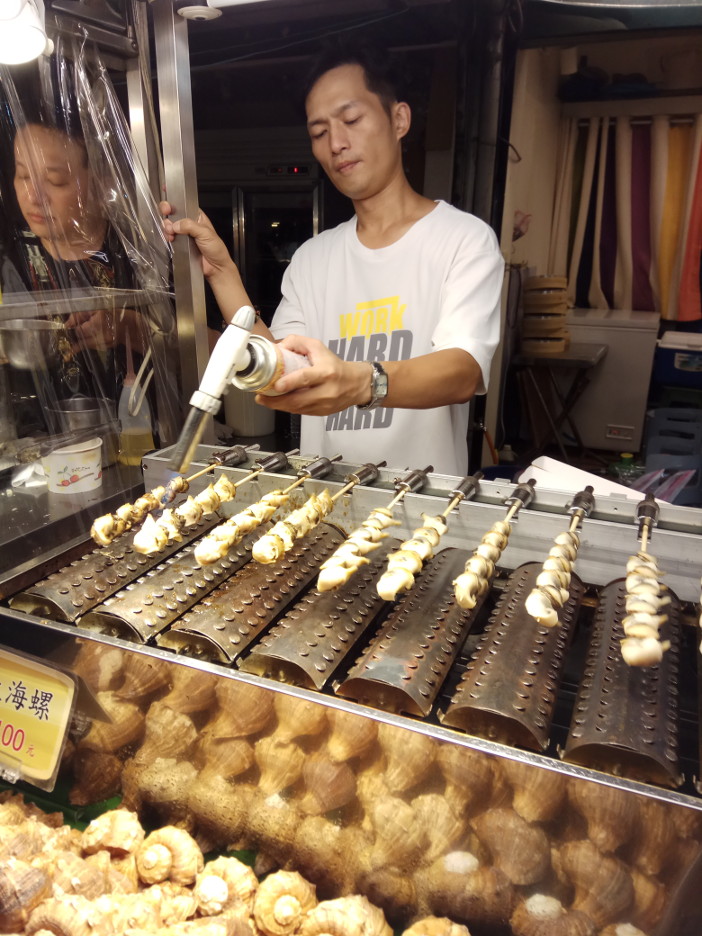
Grilling conches at the Shilin Night Market
There’s a calmer, more contemplative atmosphere to be found at Chiang Kai-Shek’s presidential palace. We arrived too late to visit the house itself, but it was built at the heart of an existing botanical garden established by the Japanese during the occupation, and we wandered through the grounds, watching the butterflies and listening to the birds. At the top of a hill is the Pavilion of Maternal Love – a good place for kids to sit quietly, and think about what really matters…
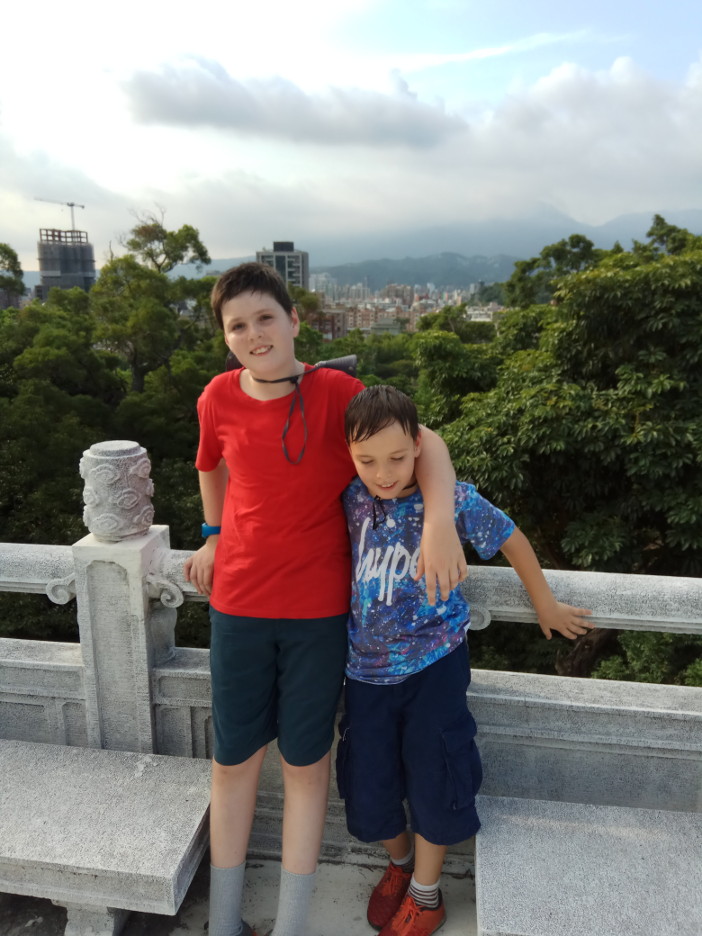
At the Pavilion of Maternal Love
Taipei has much to offer the visitor, but after a couple of days, we were off again, to the south of the island, and the city of Taitung.
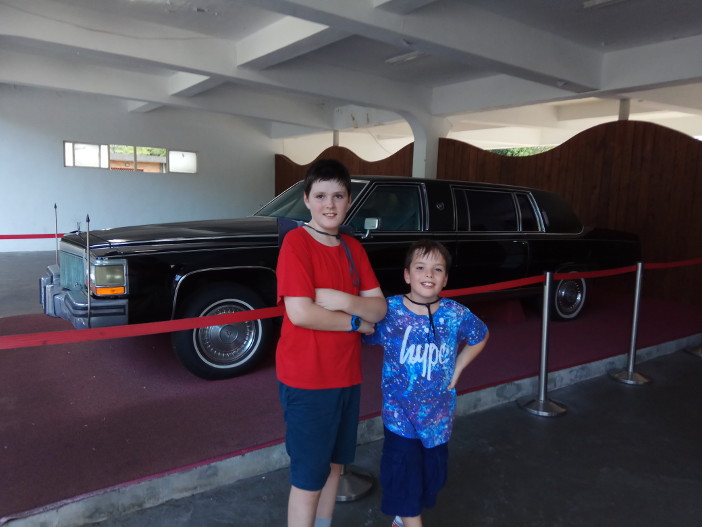
Madame Chiang’s limousine. They wouldn’t give us a ride to Taitung, so we took the train
Photos: Carrie Kellenberger via Flickr (featured), Andrew Killeen (others)



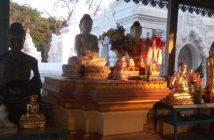

1 Comment
Pingback: Treasure and Trash in Taipei – The Silk Road Story